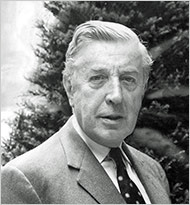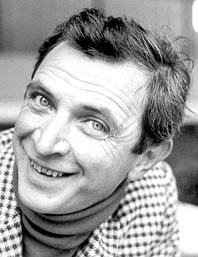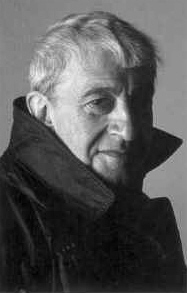Related Research Articles

Dame Ninette de Valois was an Irish-born British dancer, teacher, choreographer, and director of classical ballet. Most notably, she danced professionally with Serge Diaghilev's Ballets Russes, later establishing the Royal Ballet, one of the foremost ballet companies of the 20th century and one of the leading ballet companies in the world. She also established the Royal Ballet School and the touring company which became the Birmingham Royal Ballet. She is widely regarded as one of the most influential figures in the history of ballet and as the "godmother" of English and Irish ballet.

Sir Frederick William Mallandaine Ashton was a British ballet dancer and choreographer. He also worked as a director and choreographer in opera, film and revue.
Sir Matthew Christopher Bourne is a British choreographer. His productions contain many classic cinema and popular culture references and draw thematic inspiration from musicals, film noir and popular culture

The Royal Ballet is a British internationally renowned classical ballet company, based at the Royal Opera House in Covent Garden, London, England. The largest of the five major ballet companies in Great Britain, the Royal Ballet was founded in 1931 by Dame Ninette de Valois. It became the resident ballet company of the Royal Opera House in 1946, and has purpose-built facilities within these premises. It was granted a royal charter in 1956, becoming recognised as Britain's flagship ballet company.

John Cyril Cranko was a South African ballet dancer and choreographer with the Royal Ballet and the Stuttgart Ballet.

Teet Kask is an Estonian choreographer.

Sir Kenneth MacMillan was a British ballet dancer and choreographer who was artistic director of the Royal Ballet in London between 1970 and 1977, and its principal choreographer from 1977 until his death. Earlier he had served as director of ballet for the Deutsche Oper in Berlin. He was also associate director of the American Ballet Theatre from 1984 to 1989, and artistic associate of the Houston Ballet from 1989 to 1992.
David Lichine was a Russian-American ballet dancer and choreographer. He had an international career as a performer, ballet master, and choreographer, staging works for many ballet companies and for several Hollywood film studios.

Dame Gillian Barbara Lynne was an English ballerina, dancer, choreographer, actress, and theatre-television director, noted for her theatre choreography associated with two of the longest-running shows in Broadway history, Cats and The Phantom of the Opera. At age 87, she was made a DBE in the 2014 New Year Honours List.
Dame Catherine Margaret Mary Scott, was a South African-born pioneering ballet dancer who found fame as a teacher, choreographer, and school administrator in Australia. As the first director of the Australian Ballet School, she is recognised as one of the founders of the strong ballet tradition of her adopted country.
Sir Anthony James Dowell is a retired British ballet dancer and a former artistic director of the Royal Ballet. He is widely recognized as one of the great danseurs nobles of the twentieth century.
Sir Peter Wright CBE is a British ballet teacher, choreographer, director and former professional dancer. He worked as a choreographer and as the artistic director of Birmingham Royal Ballet, a classical ballet company based in Birmingham, England. On retiring from the company in 1995, he was bestowed the honorary title of director laureate of the company.

The State Opera and Ballet is the national directorate of opera and ballet companies of Turkey, with venues in Ankara, Istanbul, İzmir, Mersin, Antalya and Samsun. The directorate is bound to the Ministry of Culture and Tourism. As of January 2018, Murat Karahan is the General Director.
Meryl Tankard is an Australian dancer and choreographer who has a wide national and international reputation.
Matthew Bourne's The Car Man is a dance production by British choreographer Matthew Bourne. It previewed for the first time on Tuesday, May 16, 2000, at the Theatre Royal in Plymouth, England, and was subsequently staged at the Old Vic in London in September of that year.

Northern Ballet, formerly Northern Ballet Theatre, is a dance company based in Leeds, West Yorkshire, England, with a strong repertoire in theatrical dance productions where the emphasis is on story telling as well as classical ballet. The company tours widely across the United Kingdom.
Paul Clement Hammond OAM was an Australian ballet dancer, teacher and choreographer.
Leighton Lucas was an English composer and conductor. His career was wide-ranging: he was associated with the revival of interest in 20th century English ballet, arranged music for dance bands, conducted challenging contemporary classical works and wrote many original concert and film scores.
Janet Karin OAM was born in Perth, Australia in 1938. She became one of Australia's leading dancers in 1956, and has danced with the Victorian Ballet Guild, Borovansky Ballet, and was a founding member of The Australian Ballet. She is a Nationally and Internationally recognised dance educator, and is currently the Head of Artistic Studies and Kinetic Educator for the Australian Ballet School in Melbourne, Australia.
Beryl May Jessie Toye,, known professionally as Wendy Toye, was a British dancer, stage and film director and actress.
References
- 1 2 Christmas Humphries. Both Sides of the Circle (1978) London: Allen & Unwin ISBN 0-049-2102-38, pp. 113-115
- ↑ Naomi Benari. Vagabonds and strolling dancers : the lives and times of Molly Lake and Travis Kemp, Imperial Society of Teachers of Dancing (1990)
- 1 2 Janet Rowson Davis. 'Ballet on British Television, 1946-1947: Starting Again', in Dance Chronicle, Vol. 13, No. 2 (1990), pp. 103-153
- ↑ Karen Eliot. Albion's Dance: British Ballet During the Second World War (2016), pp. 30-33
- ↑ 'Molly Lake', Oxford Reference
- 1 2 Travis Kemp obituary, in The Independent, 13 August 1995
- ↑ Cohen, Aaron I. (ed.): International Encyclopedia of Women Composers (1981), Bowker. ISBN 9780835212885
- ↑ 'The Work Of The Ballet Guild', in Picture Post No 1509, 28 August 1943
- ↑ 'Victorian Bouquet' and 'Nymphenburg Gardens', Radio Times Issue 1189, 14 July 1946, p. 27
- ↑ 'The Last Curtain', Radio Times, Issue 1220, 16 February 1947, p. 35
- ↑ David Wiles, Christine Dymkowski (ed.): The Cambridge Companion to Theatre History (2013) p. 271
- ↑ Sarah C. Woodcock. 'Dance Research': The Journal of the Society for Dance Research. Vol. 8, No. 1 (Spring, 1990), pp. 62-77